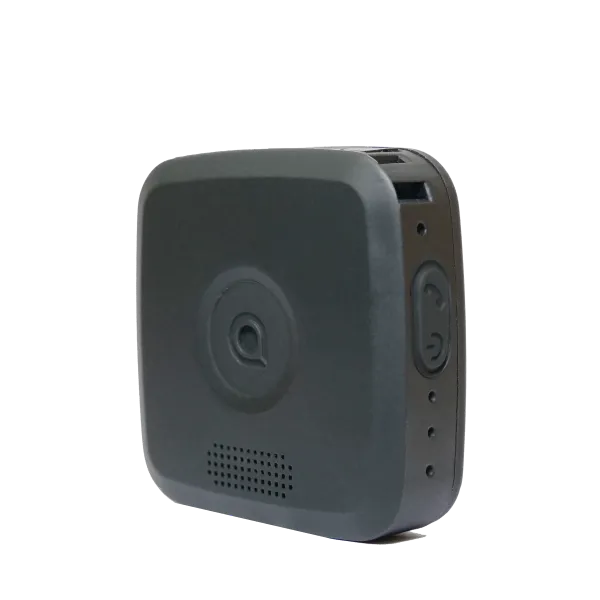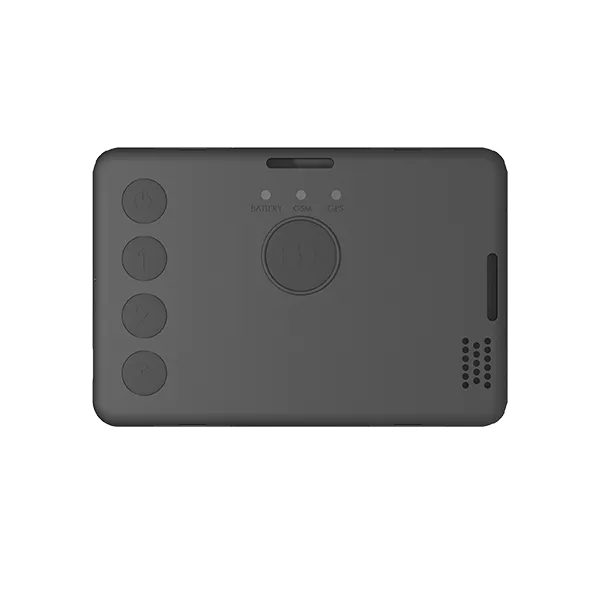Accidents at Work: Statistics, Examples, and How to Report an Incident
Learn how many workers sustained injuries at work, the most common causes of workplace accidents, and how to report a workplace accident. We also explore how a lone worker alarm or personal safety device can support workplace safety and emergency response.

Workplace Injury Statistics in the UK
The Labour Force Survey reports that 561,000 workers in Great Britain sustained a non-fatal injury in 2022-23, and the Health and Safety Executive (HSE) states that, sadly, 135 workers sustained a fatal injury.
HSE prosecuted 185 cases (in the same period) where a conviction was secured and issued 2,929 health and safety notices.
Thankfully, these accidents at work and convictions are much fewer than in previous years due to the Coronavirus pandemic.
However, figures that increased were those concerning work-related ill-health. 1.7 million workers suffered from work-related ill-health in 2020-21. Half of these suffered stress, depression, or anxiety and just under a third suffered from musculoskeletal issues.
Issues such as workload, workplace violence, bullying, lack of support, and changes at work are thought to be some of the causes.
Many of these incidents involve lone workers, who are particularly vulnerable due to the lack of immediate assistance. Investing in lone worker safety technology, such as SoloProtect’s monitored alarms, can significantly reduce these risks.
Read more on the HSE website.
Top 5 Most Common Workplace Accidents in the UK
These types of accidents are especially relevant for staff working in isolation, where the use of a lone worker safety solution can help mitigate risk. The most common examples of accidents at work (as reported by HSE) include:
- Slips, trips or falls on the same level (33%)
- Handling, lifting or carrying heavy or cumbersome items (18%)
- Struck by a moving object or falling objects from height (10%)
- Acts of violence and aggression (8%)
- Falls from height (8%)
Note: You may want to read our article which will help you to avoid slips, trips and falls at height: Tips for Lone Working at Height.
HSE also note that almost all accidents occur because of unsafe human behaviour. Therefore, organisations must consider human error as part of the Risk Assessment process and put measures in place to reduce the likelihood of this occurring e.g. reducing distractions, managing workload, monitoring noise levels etc.
Working Days Lost to Work-Related Injuries and Ill-Health
No employer wants to hear that one of their employees has had an accident at work. Their first thoughts, quite rightly, go to the safety and wellbeing of the individual involved to ensure they have the appropriate support.
However, employers also must consider the operational and economic impact of accidents on their business. 339,000 workplace injuries resulted in an absence of fewer than 7 days.
However, 102,000 resulted in an absence of over 7 days. Depending on the role, this length of absence can have a detrimental impact on output and a temporary replacement for the role may need to be found.
The Labour Force Survey reported that 38.8 million working days were lost due to work-related ill health and workplace injury and HSE estimated that the cost to Great Britain of workplace injuries and ill-health was a whopping £16.2 billion.
When an accident occurs, using a lone worker device with a Red Alert function can speed up the emergency response and reduce the time an employee is out of work.
UK Industries with the Highest Workplace Injury Rates
The industries with the highest number of workplace injuries in Great Britain are:
These sectors also have a high concentration of employees working remotely or alone, highlighting the importance of effective dynamic risk assessments and lone worker protection systems.
How to Report a Workplace Accident: Step-by-Step Guide
Understanding how to report a workplace accident ensures you comply with RIDDOR and support your duty of care obligations.
What you should do when an accident occurs in the workplace may vary depending on the incident. However, generally, here are some steps to follow:
As Soon as Possible After the Accident:
- Your number 1 priority is to call for help. If you or someone near you is seriously injured, either make a 999 call or press the Red Alert button on your lone worker device.
- Ensure that no one else has been injured and clear the area if there is still an immediate danger.
- Tell a manager or team leader who can give you additional instructions and support.
- Report the accident as per your organisation’s policies and procedures. This may involve informing your organisation’s Health and Safety department.
Your Health and Safety Team Would Usually Then:
- Talk to any witnesses and request audio evidence recorded by the personal safety application or device (also useful for any accident compensation claims).
- Record details of the accident in an accident book and explain how the incident happened.
- Complete a RIDDOR report.
Under the Reporting of Injuries, Diseases and Dangerous Occurrences Regulations (RIDDOR), employers have a legal obligation to report accidents at work. A RIDDOR report is required when an accident is work-related and it results in one of the injuries specified under RIDDOR e.g. a fracture, amputation, sight loss, crush injuries resulting in internal organ damage, and serious burns. You can find out more on the HSE website. - Review the incident.
Do any policies or procedures need to be changed to stop this from happening again? Does the accident highlight any additional training needs? Do Risk Assessments need to be updated?
How a Lone Worker Alarm or App Supports Emergency Response
If you carry a SoloProtect personal safety device or have the mobile app on your phone, calling for help if you or someone you’re with has an accident is extremely quick and easy. Just press the Red Alert button. This will open a call with the SoloProtect Monitoring Centre where operators will be able to locate you, establish the seriousness of the incident, and send appropriate assistance e.g. the emergency services or a colleague. If the police are required, SoloProtect can dial straight into the relevant police control room and we are guaranteed a level 1 response.
If you are incapacitated as a result of the accident, your device or app will sense this and automatically raise an Incapacitation Alert (sometimes called a Man Down Alarm). Once again, this will open a call with the Monitoring Centre and operators can escalate the situation as necessary.
In both scenarios, there’s no need to make a 999 call as our operators will handle this on your behalf and send help to your exact location. We will also notify your escalation contacts of the accident e.g. a colleague and/or family member. This means you can focus on ensuring your immediate safety and wellbeing until help arrives.
Using a lone worker app or wearable safety device not only improves personal protection but also supports faster emergency response and more accurate incident reporting.
How to Prevent Workplace Accidents Using Risk Assessments and Lone Worker Technology
Employers must start by recognising workplace hazards and then ensuring comprehensive risk assessments are in place to identify the likelihood of someone being harmed and the measures that are in place to reduce and control hazards to employees. For example, an employer may identify slip, trip and fall hazards and then put control measures in place to prevent slips, trips and falls at work.
Take a look at our blog: Lone Worker Risk Assessments: your guide.
It’s also important for organisations to encourage effective Dynamic Risk Assessments. The Check-In feature of a SoloProtect lone worker alarm can help to ensure this is at the forefront of people’s minds.
Implementing workplace safety technology, such as SoloProtect’s lone worker alarms, complements your prevention strategy and provides real-time support in emergencies.
Get Expert Advice on Lone Worker Safety and Workplace Accident Prevention
To learn how a lone worker system can help you prevent workplace accidents, respond faster to incidents, and support your duty of care, contact us today.
Book a free demo, request a quote, or get answers to your questions:
- Book a Lone Worker Safety Demo →
- Get a No-obligation Quote →
- Contact Us →
- Call us: 0114 399 6000
Your message has been received and we will be in touch shortly.










.webp)
.webp)









